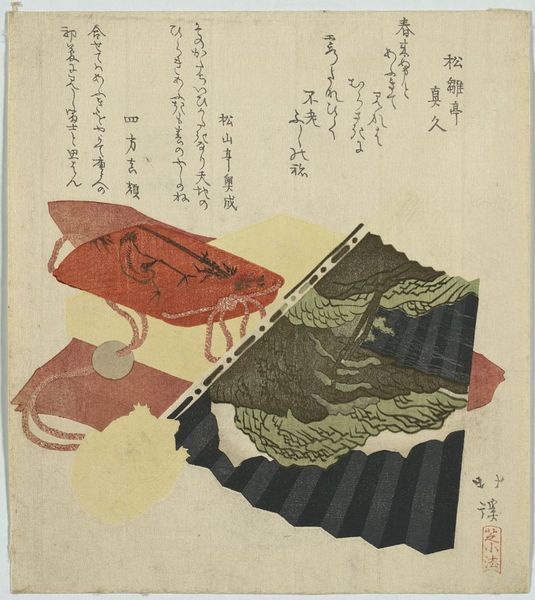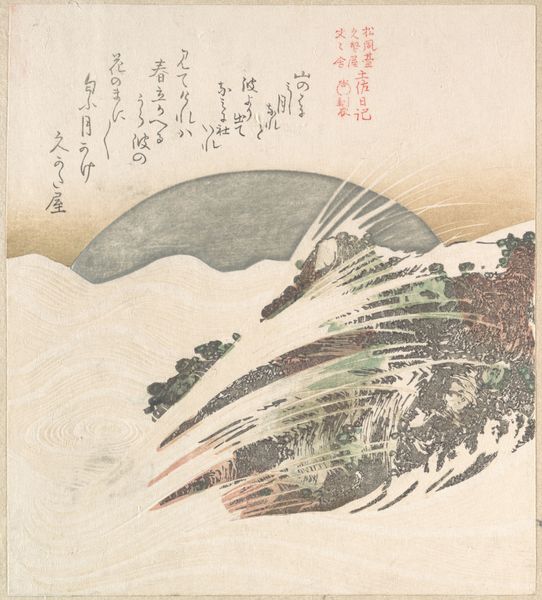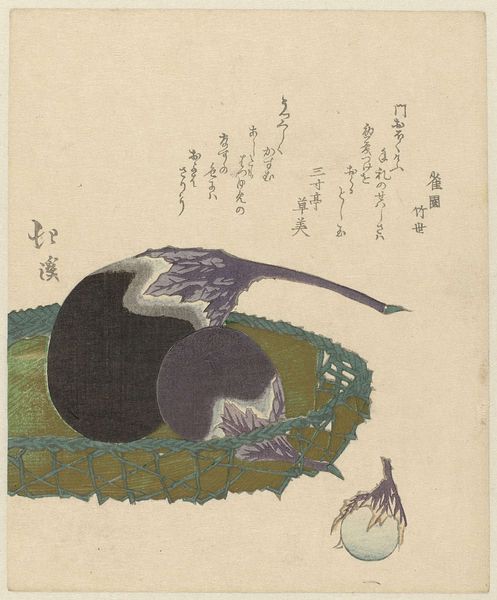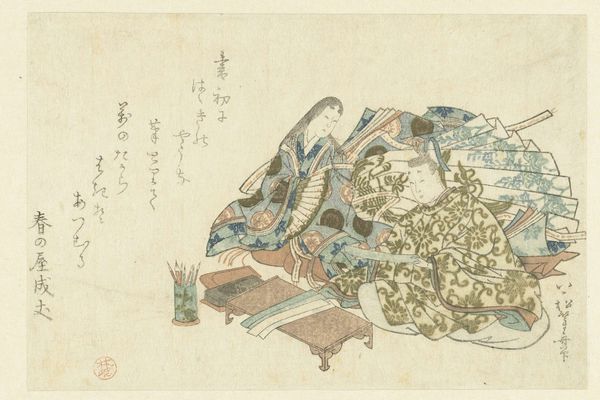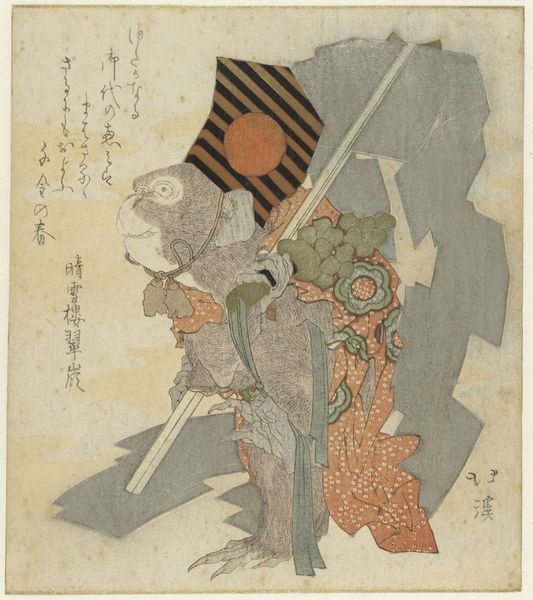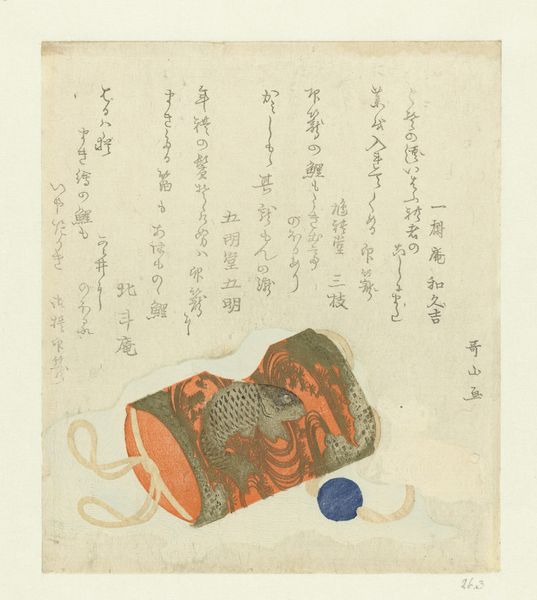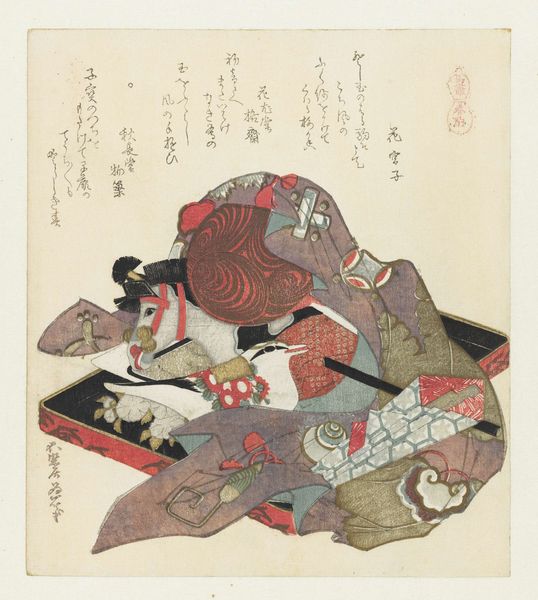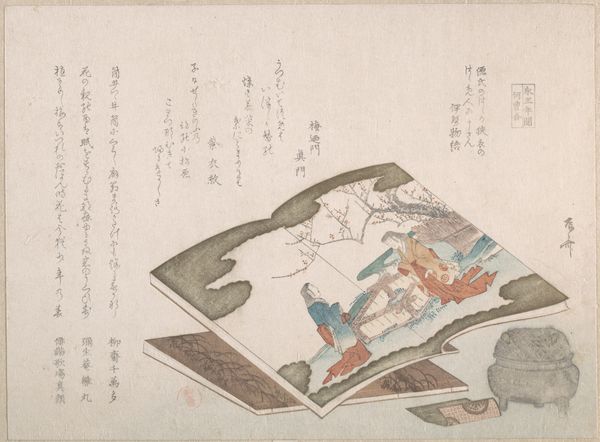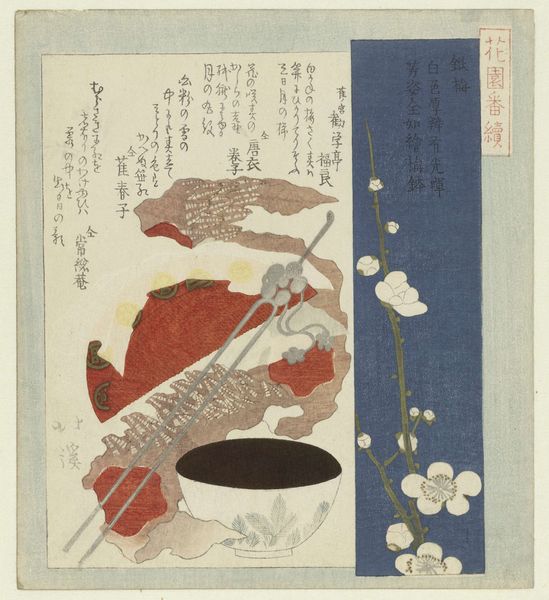
print, woodblock-print
# print
#
asian-art
#
landscape
#
ukiyo-e
#
figuration
#
woodblock-print
#
line
Dimensions: height 181 mm, width 162 mm
Copyright: Rijks Museum: Open Domain
Curator: At the Rijksmuseum, we're looking at "Waaier en inro," a print made around 1822 by Totoya Hokkei. It’s a stunning example of ukiyo-e woodblock printmaking. Editor: My first thought is…layers! It feels like Hokkei is stacking moments in time or perhaps contrasting realms on top of each other in such a simple composition. Curator: Precisely. Look at the intentional placement of objects: the fan, the inro case, all meticulously arranged. Hokkei plays with texture using just a few blocks—the rough paper against the slick lines of the landscape is compelling. Editor: It makes me wonder what the dragon depicted on the case represents and its purpose in comparison to the idyllic scene constructed with such meticulous care. Does the scene bring balance or offer contrast? Curator: Ukiyo-e prints like this often alluded to popular stories or poems. In this artwork we notice calligraphic elements, the poem gives extra information about what we see: it suggests themes from landscape to a still-life that allows reflection and an interaction between nature and society. Editor: Nature and artifice blended like a beautiful whisper. It’s interesting, isn’t it, how Hokkei makes absence so present? The missing face, the unwritten narrative--we get the feeling these objects signify a whole world, not just a scene. Curator: That's what makes Hokkei's works endlessly fascinating. He gives us fragments, symbols that beckon our minds to fill in the blanks, crafting personal meaning each time we view the artwork. Editor: Yes, like capturing the mood of fleeting moment...a story left to each person. A little world inside a frame. Curator: A moment to be appreciated, just like those objects, fans, inro are part of daily life—a timeless daily life indeed.
Comments
No comments
Be the first to comment and join the conversation on the ultimate creative platform.
